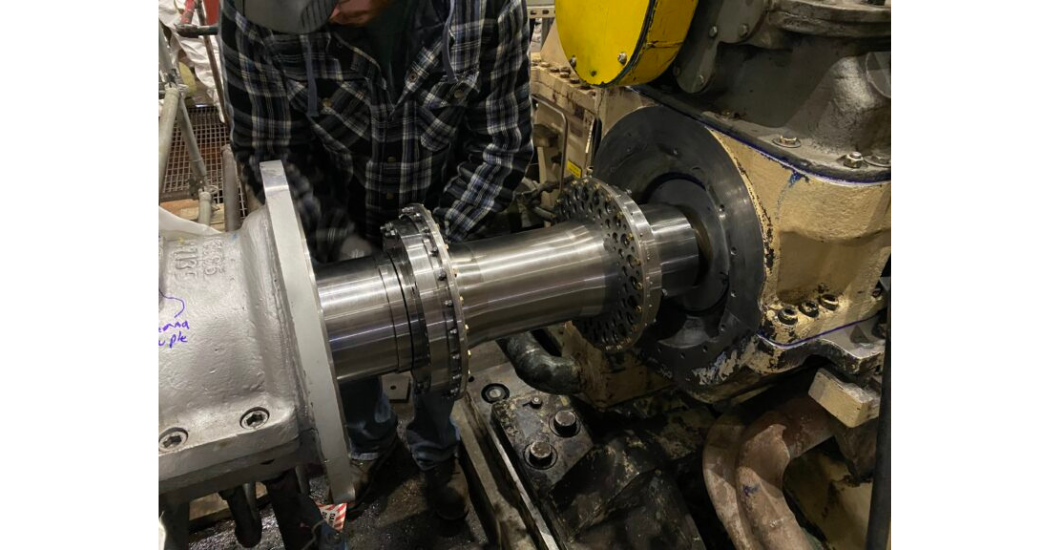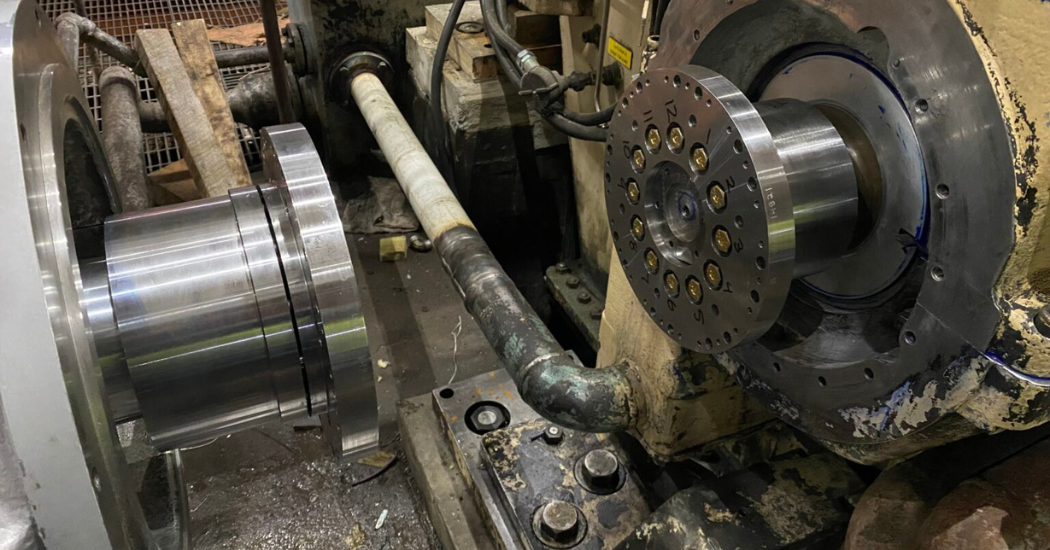During a recent power plant installation following an extended outage, a new coupling was being installed, along with a new pump shaft and element, and significant turbine maintenance. The original distance between shaft ends was 14.0 inches, and the FLEXXOR Coupling spacer was designed to fit this dimension. However, the exact amount of thermal growth and equipment thrust was not yet determined.
Thermal Growth Determination
Before the installation could continue, a discussion about thermal growth and thrust position ensued. The team realized that the net result of the shaft movement would amount to a different BSE than was expected. The difference in shaft position was about 0.100 inches. Since the allowable axial movement of the coupling was +/- 0.090 inches, it was crucial to set the hubs and shafts properly so that the running BSE would not be in a position to overly stretch or compress the coupling.
 Correcting the Axial Position of the Coupling Hub
Correcting the Axial Position of the Coupling Hub
Once the correct shaft spacing was determined, the hubs needed repositioning. Since the pump side hub was already fixed in its position by the shaft taper, the adjustment needed to happen on the turbine side where the shaft was straight. Luckily CouplingCorp had designed the hubs to have some adjustability in the axial position of up to 0.250 inches. So, within minutes, the Anderson Clamp Hub was loosened, repositioned, and re-tightened in the new position.
Thanks to the ease of use of the Anderson Clamp Hub, the mechanics overcame a last-minute hurdle with no sweat. No heat or hydraulics were needed, and one mechanic could make the adjustment very quickly.

